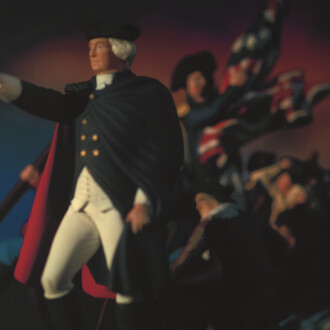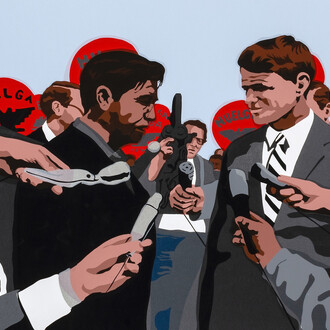From 1 November, on the occasion of its 25th anniversary, the Kunsthal Rotterdam will present a large retrospective exhibition of Paul Delvaux (1897-1994), one of the leading painters in Belgian art history. With ninety works, including paintings, drawings and water colours, the Kunsthal will pay tribute to this artist. Delvaux is known for his characteristic and mysterious visual language in which elements from a variety of art movements, such as expressionism, symbolism and surrealism, are effortlessly combined. The exhibition highlights the opulence of his oeuvre, influenced by the expressionism of James Ensor, Gustave de Smet and Constant Permeke. Encounters with contemporaries Giorgio De Chirico and René Magritte resulted in unusual and surrealistic influences in his work. Delvaux developed a unique visual language of his own and left behind an intensely poetic body of work.
Many of the works are part of the private collection of Pierre and Nicole Ghêne-Rahm, housed at the Museum of Elsene in Brussels. The selection of artworks from this collection will be accompanied by paintings from other museums and private collections.
The exhibition will immerse the visitors in the mysterious world of Paul Delvaux by focusing on his most important themes: the female body, dreams, the mystery, travel and trains, and loneliness. In his quest for a style of his own, Delvaux was heavily influenced by other artists, each of them guiding him to a new phase in his artistic career. Under the influence of Amedeo Modigliani he ventured into making portraits of women at the end of 1920s. Delvaux’s complex relationships with women – from his possessive mother to his problematic marriage – resulted in an extraordinary fascination for the opposite sex. He painted many unattainable women showing their nudity, often in the seclusion of another world. The dreamlike and confusing atmosphere in these works is at the heart of Delvaux's universe.
Since his earliest childhood, Paul Delvaux was fascinated by trains, trams and stations, a recurring theme in his work. His great admiration for De Chirico as well as a trip to Italy in 1938 resulted in an increased number of references to classical architecture and metaphysical scenes in his work. Under the influence of James Ensor, Delvaux incorporated skeletons in his paintings, placing them on his canvasses as if they were old acquaintances. Delvaux’ skeletons have a powerful visual impact, take part in excesses and display a ‘macabre baroque'. Numerous references to classical antiquity and (neo-)classical masters are also waiting to be discovered in Delvaux’s work.
Although Paul Delvaux is considered to be one of the most important surrealists, he never considered himself to be one. His paintings have a theatrical style and are extremely well thought-out in their composition and execution while his drawings show more exploratory lines and spontaneity. During the Nazi regime of the Second World War, Delvaux did not want to exhibit his work. However, after the war he found himself to be the centre of attention as a leading Belgian painter, with high-profile exhibitions in New York and Paris. With his ‘poetic realism’ he was commissioned to create numerous murals and was honoured with high distinctions, including the Belgian State Prize.














